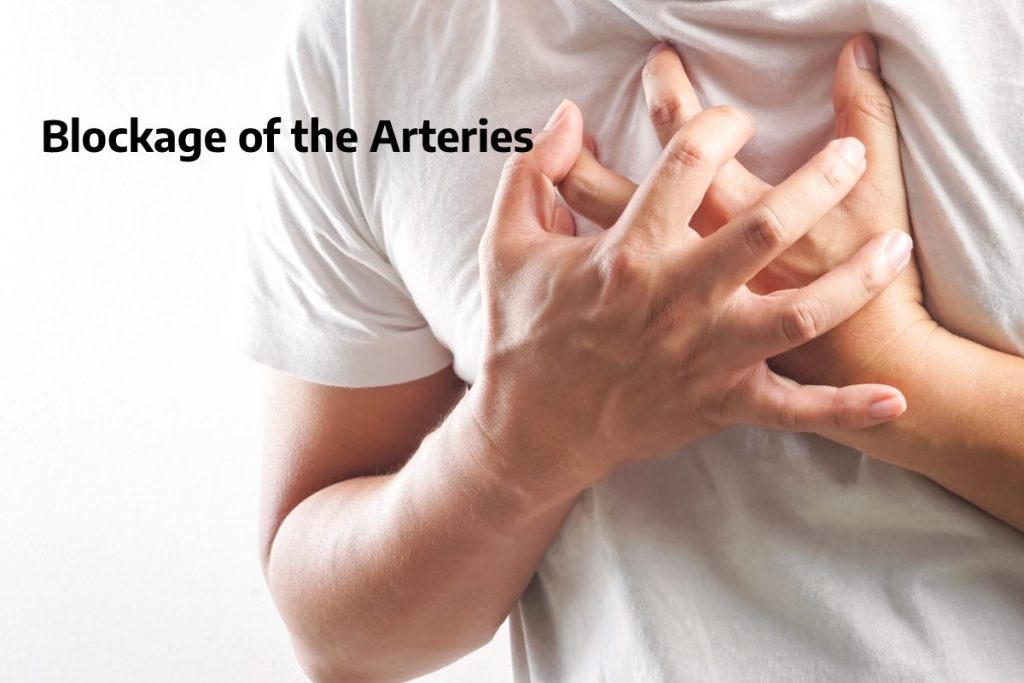Table of Contents
Introduction
Blockage of the Arteries – The heart’s arteries are called coronary arteries to deliver blood to the heart, and if the coronary artery is blocked, the disease is known as coronary artery disease (CAD).
It is a disease in which plaques accumulate within the coronary artery, consisting of fat, cholesterol, calcium, and other substances in the blood.
Over time, plaques harden, and arteries narrow, clogging the heart-feeding arteries and thereby reducing oxygen-rich blood flow to the heart, and thus angina or heart attack, so what are the symptoms of clogged heart arteries?
Symptoms of Blockage of the heart’s Arteries
The backup of the heart’s arteries has been slow for decades, so you may not notice any problem until a significant blockage or heart attack occurs.
Symptoms of clogged heart arteries include:
Chest Pain or angina
Chest pain is the common symptom of a blockage of the heart’s arteries, when many plaques accumulate inside the arteries, narrowing them and causing chest pain because they prevent blood flow to the heart muscle and the rest of the body.
The patient feels heavily in the chest as if someone is sitting on his chest, and this pain occurs in the middle or left side of the chest and can spread to the left arm, neck, jaw, or back and stop within a few minutes of rest.
Many describe it as pain, weight, numbness, or chest tightness and angina appears after physical exertion or emotional pressure.
There are two main types of angina:
Stable angina is the most common, with seizures due to triggers, such as exercise and stopping within minutes of rest.
Unstable angina is more dangerous, as attacks are unpredictable and can continue despite comfort.
Heart Attack
If blood flow is cut off from part of the heart muscle, the energy requirements of the heart become more than the blood supply, and a heart attack causes.
Symptoms of a Heart Attack include:
Pressure, tightness, chest pain, or a feeling of pressure in the chest may spread to the arms, neck, jaw, or back.
Cold sweat.
Dizziness or sudden dizziness.
Nausea, indigestion, heartburn, and abdominal pain.
Self-distress.
Coughing.
Pallor in the face.
Extreme fatigue, anxiety, fatigue.
Quick or irregular heartbeats.
Symptoms can vary from person to person or from heart attack to heart attack, and women are more likely to develop stomach disorder, shortness of breath, back pain, and jaw.
Shortness of Breath
Clogged heart arteries result in the heart not being able to pump blood enough to meet the body’s needs, causing severe chest tightness, severe air need, difficulty breathing, apnea, suffocation, and fatigue when taking out and entering the air.
Shortness of breath can develop into stress and fatigue.
Symptoms of Blockage of Other Heart Arteries
symptoms of blockage of other heart arteries include:
Fatigue: it appears when feeling anxious. And also, stressed or making a physical effort, even superficial.
Increased heartbeat: an increase in the number of heartbeats above normal.
Swelling of the legs: a common symptom of all cardiovascular diseases.
Symptoms of coronary artery disease in women can differ from men, and women are less likely to recognize the signs of a heart attack and seek treatment.
Diagnosis of Blockage of the Arteries of the Heart
Your doctor will perform physical examinations and blood tests to detect blockages in the streets of the heart
Your doctor may perform one or more of the subsequent tests:
Electrocardiogram.
Echocardiogram.
Stress or endurance test.
Cardiac catheterization and vascular image.
Heart scan.


